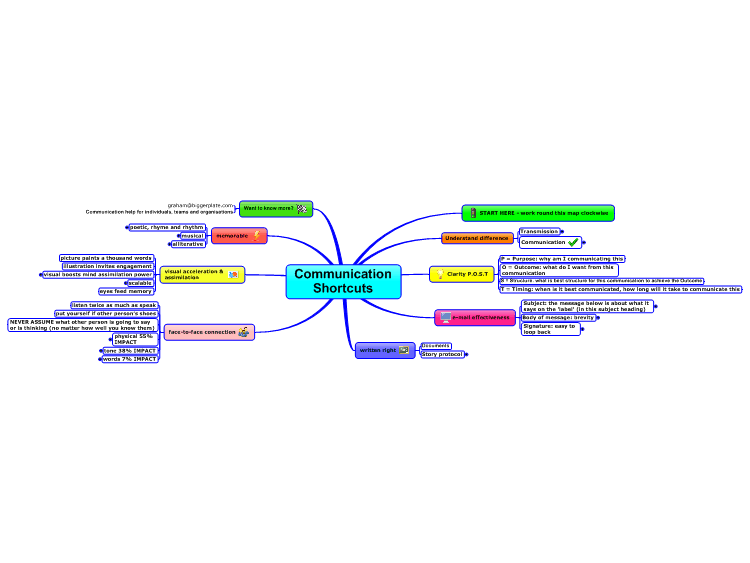43 label for acceleration
SI Units and Symbols used in the Guide - physics help Subject. Physical Quantity. Symbol. Name. Unit. Mechanics. Mass. m, M. kilogram. kg. Linear position. Length, Distance. Radius. x, r. l, d. R. meter. m. Time. t ... The Acceleration Formula (Equation) In Physics: How To Use It Summary. In summation, acceleration can be defined as the rate of change of velocity with respect to time and the formula expressing the average velocity of an object can be written as: a =Δ v/ Δt. The other 4 equations: d = vit+ (1/2) at2. vf = vi + at. vf = vi +2 ad. d = ( ( vi + vf )/2) t.
Acceleration Question -- How to label the vectors of motion... It is common in basic mechanics for people to talk about 'negative acceleration' but that is just a shorthand for saying the projection of the acceleration vector on the vector pointing along the positive directional axis points in the opposite direction to that axis. Or in symbols

Label for acceleration
Average Acceleration: Definition, Formula, Examples and more t 2 − t 1 = Δ t. The average acceleration a 12 that the particle has between instant t 1 and instant t 2 is defined as the ratio of the change in velocity between t 1 and t 2, i.e., v 2 − v 1, to the interval of time between t 1 and t 2, i.e., t 2 − t 1. Therefore, the formula for average acceleration is. a 12 =. Get CGS and SI Unit Of Acceleration Here - BYJUS When we calculate acceleration, it basically involves velocity and time factor and dividing them in terms of units, meters per second [m/s] by second [s]. Moreover, the dividing distance by time twice is equal to dividing distance by the square of time. Therefore, the SI unit of acceleration is the meter per second squared or (m s−2). Label-assisted mass spectrometry for the acceleration of reaction ... Accelerating the pace of this discovery process remains challenging. We describe a highly effective and simple platform for screening a large number of potential chemical reactions in order to discover and optimize previously unknown catalytic transformations, thereby revealing new chemical reactivity. Our strategy is based on labelling one of ...
Label for acceleration. Acceleration - The Physics Hypertextbook Average acceleration is a quantity calculated from two velocity measurements. a =. ∆ v. =. v − v0. ∆ t. ∆ t. In contrast, instantaneous acceleration is measured over a "short" time interval. The word short in this context means infinitely small or infinitesimal — having no duration or extent whatsoever. Acceleration - Southeastern Louisiana University It says y instead of x and x instead of t - but that's ok. Excel says that the number infront of t^2 is 1.4121. According to the kinematic equation, the number in front of the t^2 term is 1/2 a - so 1/2 a = 1.4121. So, 1/2 a = 1.412 so then a is 2*1.412 =2.824 - thus we have obtained the acceleration from the position graph. What are acceleration vs. time graphs? (article) | Khan Academy Any line ABOVE the time axis (a=0) indicates positive acceleration. and a line below the time axis indicates negative acceleration (Slowing down) BUT The slope of the lines says NOTHING about the amount of acceleration. The slope is only a measure of 'jerkiness' (or rate of change) of acceleration. 3 comments ( 26 votes) See 3 more replies Linear Acceleration Formula: Definition, Concepts and Examples Acceleration is the rate of change in the velocity towards the time change. We denote it by symbol a, and compute it as- Linear Acceleration = Its unit is meter per second squared or m . If t (time is taken), v (final velocity) and u (initial velocity) are provided. Then the acceleration formula: v = u+at v² = u² + 2as Where,
Acceleration Formula: Definition, Speed, Solved Examples Calculate the acceleration of the car. Answer- In the forward direction, initial velocity is = 5.00 m/s. Further, the final velocity in the forward direction is = 25.0 m/s. The time in which the change took place is 10.0 s. Therefore, the acceleration is in the forward direction, with a value: a = a = a = a = 2.00 m/s 2 Acceleration - Physics Classroom The average acceleration ( a) of any object over a given interval of time ( t) can be calculated using the equation This equation can be used to calculate the acceleration of the object whose motion is depicted by the velocity-time data table above. The velocity-time data in the table shows that the object has an acceleration of 10 m/s/s. Force, Mass, Acceleration | Zona Land Education Units for force, mass, and acceleration. Mass is measured in kilograms, kg. Acceleration is measured in meters per second squared, m/s 2. When you multiply a kilogram (mass unit) times a meter per second squared (acceleration unit) you get a kilogram-meter per second squared. So a unit for force is actually the kilogram-meter per second squared. What is the label of acceleration? - Quora Acceleration is defined as "Rate of change of velocity with respect to time." Acceleration = dv/dt If acceleration is zero then → 0 = dv/dt This can be achieved if → dv = 0 dv = 0 if — Velocity is constant Velocity is zero. Therefore acceleration is zero if velocity is not changing w.r.t. time or simply it is zero. Robert Eligman
Is The Tesla Model 3 Acceleration Boost Worth It? (Our Analysis) The Acceleration Boost is a performance upgrade available for $2,000 for Tesla's Long Range AWD Model 3 cars. The Model 3 Performance can go from 0 to 60 mph (96.5 kph) in just 3.1 seconds. The Long Range variant has a timing of 4.2 seconds without the Acceleration Boost. What is the label for velocity? - FindAnyAnswer.com Additionally, how do you label average velocity? Remember to include the direction (such as "forward" or "north"). In formula form, vav = Δs/Δt. The delta symbol Δ just means "change in," so Δs/Δt means "change in position over change in time." Average velocity can be written vav, or as a v with a horizontal line over it. How to Calculate Acceleration - dummies In this case, you have. (Keep in mind that in this case, your initial velocity is 0 — you're not allowed to take a running start at the drag race!) You can rearrange this equation with a little algebra to solve for acceleration; just divide both sides by t2 and multiply by 2 to get. Great. Plugging in the numbers, you get the following: Acceleration - Wikipedia Acceleration is the rate of change of velocity. At any point on a trajectory, the magnitude of the acceleration is given by the rate of change of velocity in both magnitude and direction at that point. The true acceleration at time t is found in the limit as time interval Δt → 0 of Δv/Δt
PDF Chapter 6A. Acceleration - Saint Charles Preparatory School Definition of Acceleration An acceleration acceleration is the change in velocity per unit of time. (A vector vector quantity.) A change change in in velocity velocity requires the application of a push or pull (force). A formal treatment of force and acceleration will be given later. For now, you should know that: • The direction of accel-
Acceleration Calculator This acceleration calculator is useful for any kind of vehicle or object: car, bus, train, bike, motorcycle, plane, ship, space craft, projectile, etc. due to the many different units supported. You need to know 3 of the 4: acceleration, initial speed, final speed and time (acceleration duration) to calculate the fourth.
Acceleration Formula With Solved Examples - BYJUS Acceleration is the rate of change in velocity to the change in time. It is denoted by symbol a and is articulated as- The S.I unit for acceleration is meter per second square or m/s 2. If t (time taken), v (final velocity) and u (initial velocity) are provided. Then the acceleration is given by the formula Where, Final Velocity is v
3.2 Representing Acceleration with Equations and Graphs The equation. v 2 = v 0 2 + 2 a ( d − d 0) v 2 = v 0 2 + 2 a ( d − d 0) is ideally suited to this task because it gives the velocity from acceleration and displacement, without involving the time. Solution. Convert miles to meters. ( 0.250 mi) × 1609 m 1 mi = 402 m ( 0.250 mi) × 1609 m 1 mi = 402 m. 3.9.
"How do you label acceleration?" : physicsmemes - reddit Here you are: Fortnight 2 to s 2 = 1209600 2 Furlongs to m = 201.168. 201.168/1209600 2 = 0.00000000013784 = 1.3784×10-10 ms-2. Edit: My mistake, my calculator was only doing it to 1 sf, corrected it
Acceleration | Boundless Physics | | Course Hero Acceleration is a vector that points in the same direction as the change in velocity, though it may not always be in the direction of motion. Because acceleration is velocity in m/s divided by time in s, we can derive a graph of acceleration from a graph of an object's speed or position. Key Terms
Acceleration in Physics Problems - dummies There's a big difference between positive and negative in terms of solving physics problems — and in terms of law enforcement. If you accelerated at +1.25 m/s 2 instead of accelerating at -1.25 m/s 2, you'd end up going 180 kilometers per hour at the end of 20.0 seconds, not 0 kilometers per hour.
PDF 1 HIGHLIGHTS OF PRESCRIBING INFORMATION Limitations of Use: Not ... 4 OLUMIANT ® (baricitinib) is indicated for the treatment of adult patients with moderately to severely active rheumatoid arthritis who have had an inadequate response to one or more tumor necrosis factor (TNF) blockers.
Physics for Kids: Acceleration - Ducksters The average acceleration is the total change in velocity divided by the total time. This can be found using the equation a = Δv ÷ Δt. For example, if the velocity of an object changes from 20 m/s to 50 m/s over the course of 5 seconds the average acceleration would be: a = (50 m/s - 20 m/s) ÷ 5s a = 30 m/s ÷ 5s a = 6 m/s 2






Post a Comment for "43 label for acceleration"